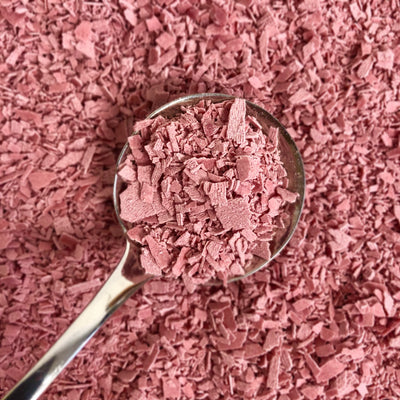World’s Top 10 Tea Producing Countries 2023
Tea is a something of a British institution and has been since 1657… but this popular beverage has been consumed by humans since it was discovered in China in 2737 BC, and it’s been a firm favourite of the world over ever since. While they certainly remain the mainstay of global tea production, countries like China, India, and Sri-Lanka, are no longer the only countries producing and harvesting a tea crop.
It might have once seemed odd that something cultivated in far off countries could even conceivably end up being served up to you in your favourite café, but gradually we’ve got used to the whole idea…
Britain’s love affair with tea began when the daughter of the Portuguese King John IV, Catherine de Braganza, married England’s Kind Charles II, in 1662.
Not only did Charles marry into one of the most powerful houses in Europe, which helped him with his numerous debts it also got him and his courtiers into the habit of taking tea…

(Image by @katelyn_g on Unsplash - https://unsplash.com/photos/zcYxM1gJTag)
Portugal, a powerful colonial power, had been trading in the East for some considerable time, which meant that the Portuguese and many of their European counterparts had a hankering for luxury goods from that part of the world; including tea, which was seriously expensive and as a result extremely fashionable in aristocratic circles.
Catherine as you might imagine, aufait with the fads and fashions of European courtiers quickly introduced the latest trend of taking tea to the English court. Resulting in the East India Company placing its first order for 100lbs of China tea in 1664. By 1685, over 12,000lbs was being imported as the national obsession with tea was created.
In 1706, London’s first tearoom opened, before long, a flurry of tearooms appeared across the city… as you might imagine tea consumption took off… the perfect excuse to embark on an international journey of tea discovery…
Unsurprisingly China tops the charts as the spiritual home of the humble cuppa producing 68% of the world’s tea weighing in at just over 2 million tonnes, with the majority grown in the provinces of Yunnan, Guangdong, and Zhejiang.

(Image by @yukato on Unsplash - https://unsplash.com/photos/n7NOMM5qk7I)
India has only been growing tea since 1830 but it’s caught up quickly producing some 1,208,780 million tonnes annually making it the world’s second largest producer, with tea grown across Darjeeling, Nilgiri and Assam. The crop was first introduced commercially by the British in 1824 to compete with neighbouring China’s tea production monopoly. It worked with the country producing the most tea for well over a 100 years. Though eventually China reclaimed its top production spot at the start of the 21st century.
Asia doesn’t have it all its own way, as we head across the Indian Ocean to the African country of Kenya, which harvests just under 436,000 tonnes of tea annually, but producing the world’s largest quantity of black tea, mainly grown in Kericho region, the Nyambene Hills and Nandi. First introduced in 1903 by GWL Caine and fully commercialised by 1924 for Brooke Bond by Malcolm Bell who was sent out to the country with that specific purpose in mind.
We head back to Asia and to Sri Lanka, which produces just under 340,200 tonnes, about 18% of the world’s tea crop, predominantly grown in the central mountains, where sought after teas like Uva, and Kenilworth are grown. First introduced to the country by the British in 1867, as they tried to break the monopoly of China in the growing stakes, ever since it’s been producing some of the world’s best single origin teas, which accounts for around 2% of the country’s GDP.

(Image by @asanthapdn003 on Unsplash - https://unsplash.com/photos/beNiTTa8Pp8)
Then we find ourselves in the Middle East, specifically to Turkey, which historically sat squarely on the ancient trade routes between east and west and now produces 227,400 tonnes of tea. Growing Riza, a tea from the region of the same name, on the north-east Black Sea coast, a province responsible for growing over 60% of Turkey’s tea. The other provinces include Trabzon, Giresun and Ordu. Despite a relatively modest harvest people in Turkey drink more tea per person than any other nation on the planet!
Heading back to Asia we find ourselves in Vietnam, where the French introduced the crop during their period of colonial rule, producing in the region of 214,300 tonnes of tea. Producing the full gamut of teas in Yen Bai province in North Vietnam; including green, black, and white, it is now among the biggest suppliers of black tea, green tea and speciality teas flavoured with flowers including lotus tea. The majority of teas are grown in the Central Highlands and in areas such as Thai Nguyen and Phu Tho.
Then we find ourselves quite seemingly by chance in the Middle East, in the unlikely tea producing country of Iran and the Caspian sea region of Gilan, which produces just over 160,000 tonnes of tea. Tea first appeared as a drink in the 15th century, due to the trade along the famous Silk Road and it quickly became popular. However, the crop wasn’t grown in the country until 1899 when Prince Mohammad Mirza smuggled tea bushes from India into the city of Lahijan and began cultivating the crop, with the first modern tea factory being established in 1934.
Travelling across the Indian Ocean we find ourselves in Indonesia, produces just under 150,000 tonnes of tea. The crop was introduced in 1782 by the Dutch East India Company during colonial rule, producing mostly black and green teas from Indian Assam varieties, which were more suited to the climate than their Chinese cousins, grown largely in the Wonosari region in East Java. Indonesian teas are renowned the world over for their high levels of catechin, a natural phenol and antioxidant, which plays a significant role in helping to maintaining a healthy gut and heart.

(Image by @arditoryan on Unsplash - https://unsplash.com/photos/7FDbDtmA1Xg)
Perhaps a little unexpectedly we find ourselves in the South American country of Argentina, which produces just over 105,000 tonnes of tea, particularly hybridized black and green tea varieties of Indian origin. Introduced in the 1920’s when the Argentine government began to urge farmers to experiment with a range of different crops, introducing tea growing to the provinces of Misiones, Corrientes, Formosa, Chaco and Tucuman and is one of the main tea suppliers to the North American market with about 50% of the market share..
Finally, we head over to Japan, which produces over 84,800 tonnes of mostly Green Sencha and Green Matcha tea, much of which is consumed domestically. Introduced to the islands in the 6th century by Buddhist monks it quickly became aligned with religious ceremonies. The first plant seeds arrived in 805 and then further seeds arrived in 806. Coming to the attention of the 52nd Emperor Saga during his reign between 809 and 823, further seeds were imported, and cultivation began and the rest as they say is history as the iconic Japanese tea ceremony and the culture associated with it began to develop. Tea is mostly grown in the prefectures of Kagoshima, Miyazaki, Kyoto, Shizuoka and Mie, where the climatic conditions are ideal for tea cultivation.

(Image by @zzing on Unsplash - https://unsplash.com/photos/0IkjYOoITzM)
Despite the seeming dominance of the top ten, other countries are waiting in the tea growing wings, even England is getting in on the act with the first ever crop grown being and harvested at Cornwall, in 2005. You never know Farrer’s may even get round to planting up a tea estate in foothills of the Lakeland Fells, after all the climate is similar to the Himalayan foothills…





